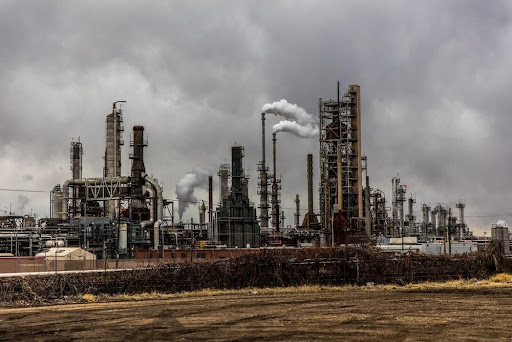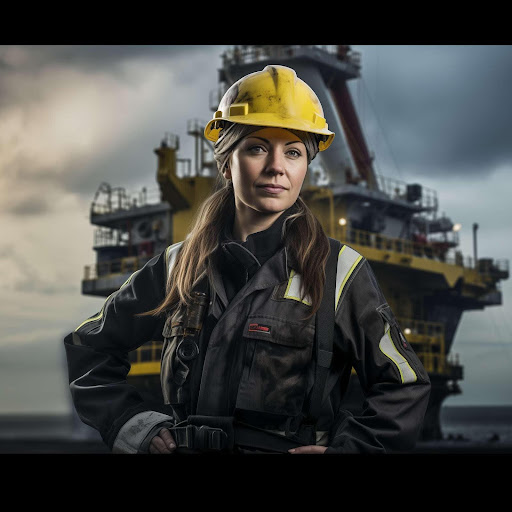
Choosing a career in engineering presents a myriad of paths, each with its unique challenges and rewards. Among these, specializing in Explosion Protection is a choice that combines technical ingenuity with the responsibility of ensuring safety in hazardous environments.
In this article, we explore the idea of choosing it as a career choice for engineers.
What is Explosion Protection?
Explosion-Protection refers typically to protecting equipment and systems designed to operate safely in environments where there is a high risk of explosions due to the presence of flammable gases, vapors, or combustible dust.
These machines are engineered to prevent the ignition of surrounding explosive atmospheres, thus playing a key role in industrial safety.
Key industries where this is indispensable include Oil & Gas, where the risk of explosive atmospheres is inherent due to the nature of the products handled.
But also the Chemical industry, known for processing volatile substances and chemicals; and the Pharmaceutical sector, where certain manufacturing processes can create combustible dust.

These machines adhere to strict safety standards, with the ATEX directive in the European Union being a prime leader. This directive ensures that equipment meets essential health and safety requirements, especially in explosive environments.
What is ATEX?
Originating from the French term "Atmosphères Explosibles", ATEX is the key standard in ensuring safety in environments where explosive atmospheres may occur. An explosive atmosphere in this context refers to a mixture of air and flammable substances in the form of gases, vapors, mists, or dusts, where, after ignition has occurred, combustion spreads to the entire unburned mixture.
The ATEX directive outlines the requirements for equipment and protective systems intended for use in such potentially dangerous settings.
The classification of ATEX is based on zones and equipment groups. This zoning helps in determining the level of protection required for equipment and precautionary measures to be implemented in these areas.
ATEX Zones Explained
Zone |
Description |
Frequency and Duration of Explosive Atmosphere |
0/20 |
Areas where an explosive atmosphere is continuously present or present for long periods |
Continuous |
1/21 |
Areas where an explosive atmosphere is likely to occur in normal operation |
Occasional |
2/22 |
Areas where an explosive atmosphere is not likely to occur in normal operation and, if it occurs, will exist for a short period only |
Infrequent |
Compliance with these ATEX zone requirements is not just a legal obligation but a fundamental aspect of ensuring the safety and well-being of personnel and the integrity of facilities in these high-risk areas.
ATEX Equipment Groups Explained
ATEX equipment groups are categories also defines in the European Union's ATEX directives to classify equipment intended for use in potentially explosive atmospheres based on the environment where the equipment will be used. There are two main ATEX equipment groups:
Group |
Environment |
Category |
Description |
I |
Underground mines and surface installations at risk from firedamp and/or combustible dust |
M1 |
Equipment must provide very high protection and remain functional even during an explosive atmosphere. |
M2 |
Equipment must be designed to cease operation in the presence of an explosive atmosphere. |
||
II |
Surface industries at risk from explosive atmospheres |
1 (1G/1D) |
Very high level of protection for areas where an explosive atmosphere is continuously present or present for long periods. |
2 (2G/2D) |
High level of protection for areas where an explosive atmosphere is likely to occur in normal operation. |
||
3 (3G/3D) |
Normal level of protection for areas where an explosive atmosphere is not likely to occur, and if it does, will exist only for a short time. |
The categorization and grouping help manufacturers and operators ensure that the correct type of equipment with the appropriate level of protection is used in environments with potentially explosive atmospheres, thereby reducing the risk of ignition and ensuring safety and compliance with regulations.
Example: HVAC/AC Systems
If used in a continuously hazardous area (like a Zone 0 or Zone 20), it might need to meet Category 1 requirements (1G/1D). If the for areas with a low likelihood of explosive atmospheres (like a Zone 2 or Zone 22), the hazardous location air conditioner would typically meet Category 3 requirements (3G/3D).
So the HVAC manufacturers must conduct thorough testing and certification processes to ensure their equipment complies with ATEX directives for the intended usage zone.
Subsequently, buyers should always consult the equipment's certification documentation to verify its ATEX group and category before using it in hazardous areas.
The Role of Engineers in Explosion Protection
Now to circle back to our main topic. How do Engineers fit into this very specific niche?
Well, it’s quite simple. The Engineers working with or on explosion proof machinery shoulder significant responsibilities. They are involved in the design and development of these machines, ensuring that they not only meet safety standards like ATEX but also fulfill operational requirements efficiently. This involves detailed knowledge of mechanical and electrical systems, as well as an understanding of the specific hazards posed by different industrial environments.

The maintenance aspect is equally critical. Engineers must ensure that the machinery is regularly inspected, maintained, and upgraded as necessary to comply with evolving safety standards and technological advancements. This ongoing process is vital to prevent equipment malfunctions that could lead to catastrophic accidents.
Skills and Qualifications Required
To excel in this field, engineers need a solid foundation in mechanical or electrical engineering, coupled with specialized knowledge in explosion protection techniques. Key technical skills include a deep understanding of industry-specific safety standards (like ATEX), proficiency in risk assessment methodologies, and expertise in designing and maintaining explosion-proof systems.

Educational qualifications typically involve a master‘s degree in engineering, preferably with a focus on mechanical, chemical, or electrical disciplines. Additional specialized training or certifications in explosion protection and safety standards significantly improve a candidate's qualifications. For instance, certifications in ATEX compliance or courses on hazardous area classifications and safety principles are highly valued
Here’s a simple table to provide a clear and structured overview of the various roles engineers play in the field of explosion protection, highlighting their responsibilities and the key skills needed for each role.
Role |
Description |
Key Skills |
Design Engineer |
Focus on designing explosion-proof machinery and systems. |
CAD, risk assessment, knowledge of safety standards. |
Maintenance Engineer |
Responsible for the regular maintenance and safety checks of equipment. |
Technical troubleshooting, preventive maintenance skills. |
Safety Compliance Engineer |
Ensures that all machinery and processes comply with safety regulations. |
Knowledge of ATEX standards, regulatory compliance. |
Research and Development Engineer |
Develops new technologies and improves existing solutions for explosion protection. |
Innovative thinking, experimentation, staying updated with technological advancements. |
Quality Assurance Engineer |
Guarantees that all products meet the required quality and safety standards. |
Attention to detail and quality control methodologies. |
Ending Thoughts: Safeguarding the Future through Engineering Expertise
In the field of explosion protection, engineers stand as guardians against potential industrial catastrophes. Their expertise in designing, maintaining, and ensuring compliance of explosion-proof machinery and systems is not just a professional endeavor but a commitment to safety and innovation. As industries evolve and technological advancements emerge, the role of these specialized engineers becomes increasingly significant.
The engineers who specialize in this field don't just engineer machines; they engineer safety, resilience, and reliability, making an invaluable contribution to the industrial sector and society at large.



